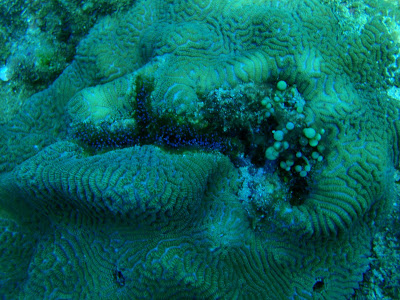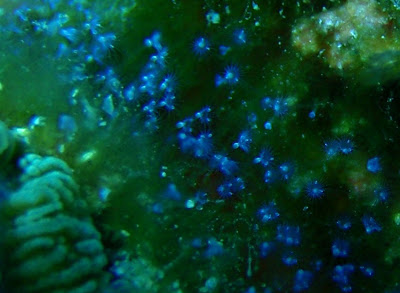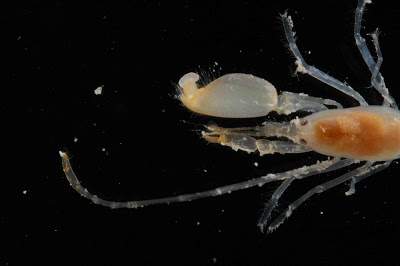There are a few animals that farm. Humans, and ants on land, but what about the oceans? Jada-Simone White has been studying the details of one marine farming relationship- that of the “farmerfish” Stegastes nigricans (a type of damselfish) which actively cultivates an algal “turf farm”.
Yesterday I had the opportunity to observe another type of marine farm. Throughout the Pacific Ocean, you can often see odd, short crevasses in large heads of coral. Sometimes they appear to have been carved in- like Petroglyphs.

These burrows are made by an Alpheid shrimp. If you look carefully, you can see that the edges of the burrow are lined with a hydroid, while the walls of the crevasse are covered in an algae, carefully cultivated by the shrimp from holes at the bottom.

The shrimp in this group typically have rather short limbs. In this case though, the secondary chela is very, very long and flexible, to be able to tend to the garden from the safety of it’s holes.

Most of the time you can’t see how this works very well, but yesterday, I found a garden that was exposed on one side. I’m posting a video below, along with a little map. The two pink arrows are the first and last access points the shrimp has to its garden. The green arrow is the hole to watch in the video. Starting around 12 seconds into the vid, you can see an arm flash out of the hole, grab some algae, and be retracted. Pretty neat for a shrimp!
-Seabird
